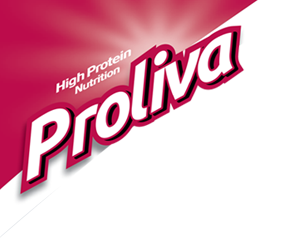-
NUTRITION: Saturated to unsaturated, not all fats are equal
19.09.2018Fat is an essential part of our diet, but not all fats are equal. I frequently get asked about the different types of fats, and I have a great handout that simply defines the differences between saturated and unsaturated, how they affect our body, and food sources. But I often have patients asking why there are these differences.
I’m a nerd about fat structure, so I will attempt to explain how and why there are different types of fat. This column is going to be more about chemistry than plain and simple menu tips. Fat in our diet is made up of fatty acids. Fatty acids are comprised of a carboxylic acid with a carbon chain. A carboxylic acid is a carbon atom that is bonded to an oxygen atom by a double bond and to a hydroxyl group (oxygen and hydrogen molecules) by a single bond. Fatty acids can be saturated or unsaturated. A carbon atom can have four bonds. Saturated fats mean that every carbon atom in the carbon chain is bonded to four other atoms; it is fully saturated. An unsaturated fat contains a double bond in the carbon chain so at least one carbon in that chain can only be bonded to three other atoms.
There are many types of unsaturated fats. The differences are based on how many double bonds and where those bonds are located within the carbon chain. Unsaturated fats can by mono-unsaturated fatty acids (MUFA) which means the chain contains one double bond, or poly-unsaturated (PUFA) meaning the chain has multiple double bonds.
The body utilizes many different types of fat. There are two fats that the body is unable to make; linoleic acid and alpha linolenic acid are considered essential fatty acids, meaning we need to consume them in our diet. Linoleic acid is an 18 carbon chain omega-6 fatty acid. Alpha linolenic acid is an 18 carbon chain omega-3 fatty acid. What is an omega fat? And what is the difference? Omega fatty acids are always unsaturated fats. The omega number, such as 3 in omega-3 fatty acids, is how many carbons away from the methyl end (opposite the hydroxyl end) of the fatty acid chain that the first carbon double bond appears.
Types of omega 3 fatty acids include alpha linolenic acid (ALA), eicosapentaenoic acid (EPA), and docosahexaenoic acid (DHA). Omega-3s have many health benefits; they are shown to be anti-inflammatory, increase good “HDL” cholesterol, aid in brain development and may even help reduce symptoms of mental illness such as depression and schizophrenia, and promote bone density. The typical American diet is often low in omega-3s. Omega-3s can be found in nuts such as walnuts and flaxseeds, fish like sardines and salmon, and oils such as canola.
Types of omega-6 fatty acids include linoleic acid (LA), which can be converted to arachidonic acid (ARA). Arachidonic acid is considered pro-inflammatory, which is critical to inflammatory process of our immune system but consumed in large amounts can lead to inflammatory diseases. The typical American diet provides quite a few omega-6 fats from vegetable oils. Omega-9 is a type of fatty acid that can be produced in the body.
Sometimes it may be beneficial to estimate omega-6 to omega-3 ratio in your diet. While there is no exact ratio to aim for the current estimates are that the typical American diet has a 16:1 ratio of omega-6 fats to omega-3s. Ideally we would aim for a number that is much closer to a 1:1 ratio. I am often asked about supplementing omega-3. While a supplement may be beneficial, I would first look at decreasing the amount of omega-6 consumed while trying to increase the amount of omega-3 in your regular diet. Always discuss supplements with your physician.
Source: http://duluthnewstribune.com/lifestyle/4500444-nutrition-saturated-unsaturated-not-all-fats-are-equal
Latest Blog Post
- Sugary Drinks Linked to a Higher Cancer Risk
- The Latest Research on Protein and Muscle-Building
- 27 Health and Nutrition Tips That Are Actually Evidence-Based
- Tall order: More to good growth in toddlers than just measurements
- Millions of cardiovascular deaths attributed to not eating enough fruits and vegetables

